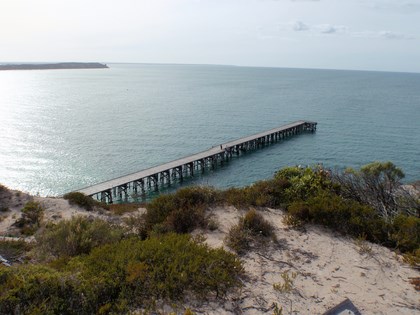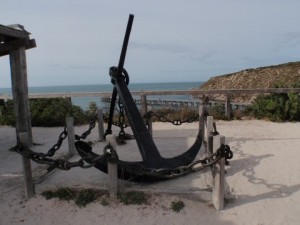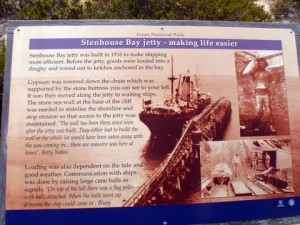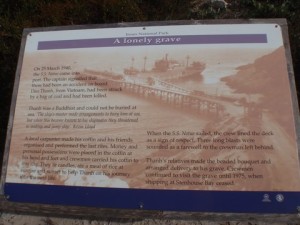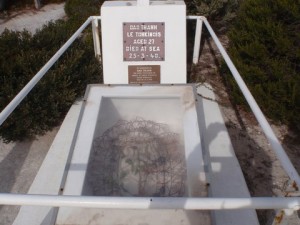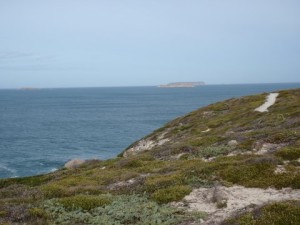During my Marion Bay trip in April 2014, my wife and I visited Stenhouse Bay. We enjoyed walking around the area, including the jetty there. A highlight of the day was a walk on the Stenhouse Bay Lookout Walk adjacent to the jetty.
The Stenhouse Bay Lookout Walk is said to be a 2km easy walk that takes about 1 hour to complete. It is a loop walk that returns to the start near the picnic and information shelter by the anchor display overlooking the jetty.
The views from the walk are beautiful. According to Kym Tilbrook in The Advertiser’s SA Weekend magazine, “the trail snakes through coastal vegetation”. Kym goes on to say, “The first lookout has two interpretive panels detailing the mining boom and the hauling of gypsum from Inneston to Stenhouse Bay.
By 1916, plaster was also being exported from Stenhouse Bay. When the great depression struck in 1930, the plaster factory closed. However, gypsum is still mined at nearby Marion Lake.
But I seem to be getting off of the trail so to speak. Kym says that “The trail goes through bushland to another lookout above “the cutting”. Now closed due to instability, the cutting was dug so goods could be delivered to the jetty without being hauled up and down the cliff by hand-winch on a light-rail track. Other lookouts reveal the tough conditions facing coastal plants. Another gives a view over Stenhouse Bay, where the hall and shop are the only buildings left of this once over 500-strong community.
The trail meanders to the cliff top and the grave of Dao Thanh, a Vietnamese sailor who was killed on March 25, 1940, when he was struck by a bag of coal on board the SS Notue.
From here, the trail winds around the headland, with views of Haystack and Althorpe Islands.
The island to the left is Seal Island, home to Australian sea lions. The next stop is Goofy Hut, set up following the bombing of Darwin in February 1942. The RAAF consulted with the mining company to set up volunteer air observer corps, who reported plane and ship sightings. From the site, the trail rises gently to the first lookout – the surveillance site.”
[print_gllr id=607]

